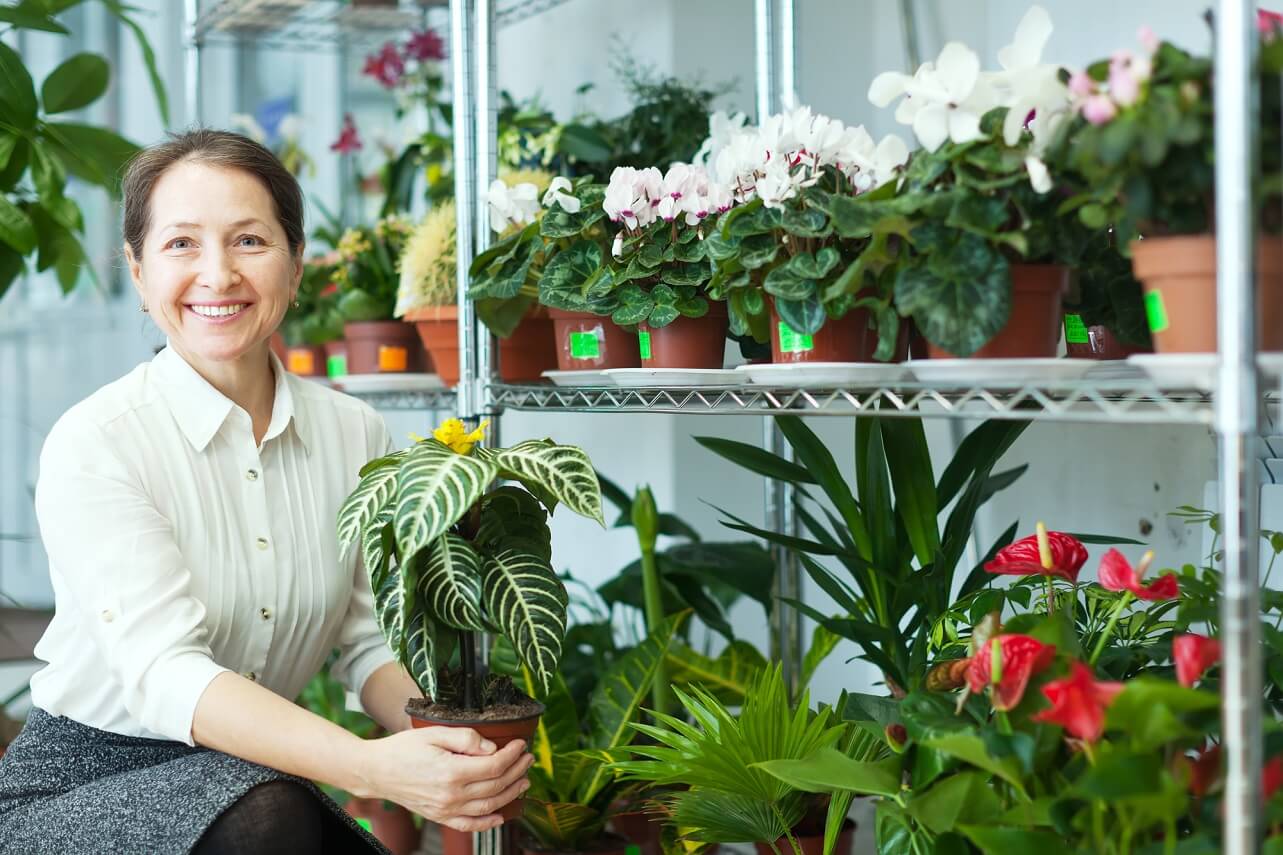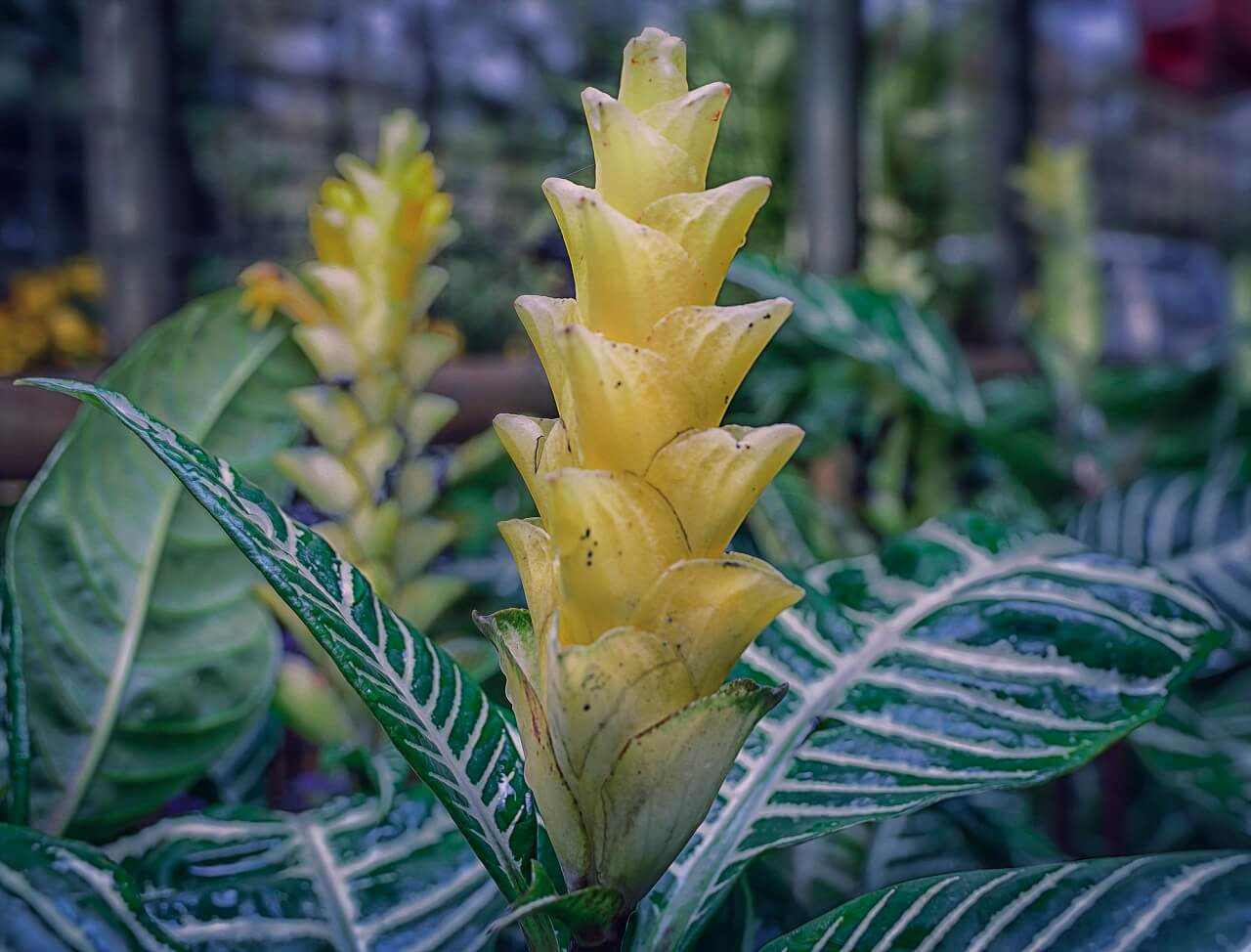Zebra plants, or Aphelandra squarrosa, are gorgeous houseplants known for their striped foliage. While they are known for being finicky, they’ll last for a long time once you learn how to keep them happy. This article gives an overview of caring for zebra plants indoors, and how to get them to flourish to their full potential.
What You'll Learn Today
How Do You Take Care of a Potted Zebra Plant?

When you’re considering buying a new houseplant, it’s a good idea to know where they are originally from, and try to emulate those conditions. Zebra plants are native to the rainforests of South America, where the environment is warm and humid. Here’s how you can mimic their ideal conditions:
Light
Zebra plants prefer really bright, indirect light. Leaving them in direct sun can burn their foliage.
If you have an unobstructed Southern-facing window, your plant should be several feet away from the window to avoid being in direct sunlight. If this isn’t possible, you can filter the light by hanging a sheer curtain.
You’ll also notice that your zebra plant needs brighter light in the spring and summer months, which is the active growing season. If your plant doesn’t get enough natural light, you can try supplementing with a grow light.
Temperature
Zebra plants thrive in temperatures between 65 – 75 degrees fahrenheit during the growing season. They may tolerate temperatures as cold as the lower 50s in the winter months.
These plants also show signs of stress when exposed to cold drafts. If your house isn’t well-insulated and the windows are drafty, try to move them to warmer area in the colder months.
Humidity
As you may have guessed, zebra plants like it humid. Ideally, they will be happiest if the humidity levels are at least 60%.
The best way to increase humidity for zebra plants is to place a humidifier a few feet away. If you don’t have a humidifier, some people find that placing their plants on a pebble tray filled about halfway with water. Just make sure that the bottom of the pot is not touching the water, since zebra plants don’t enjoy wet feet.
If you’re new to pebble trays, here’s a great video that walks you through the process of setting them up:
Another way to increase humidity levels around your plant is to place it near other houseplants. Plants give off moisture via transpiration, so grouping houseplants together can help to raise moisture levels.
Soil
Zebra plants need a very well-draining potting mix. If possible, try to use an organic soil mix, since they tend to use more materials that drain well.
If you have a regular all-purpose potting mix on hand, you can also mix that with some sort of soil amendment to improve drainage. Perlite, in particular, is great at aerating the soil and preventing it from staying soggy for too long.
Fertilizer
Your zebra plant will appreciate regular fertilizing during the active growing season. Aim for feeding it about once per month, but no more than every 2 weeks.
You can use any all-purpose, water soluble houseplant fertilizer for your zebra plant.
How To Water a Zebra Plant?
Like many tropical houseplants, zebra plants like their roots to be consistently moist, but not soggy. This can be a tricky balance to strike, especially since zebra plants can be a little dramatic (dropping leaves, etc.) when their watering requirements are not met.
A good rule of thumb is to water a zebra plant when the top two inches of soil are dry. Never let the soil dry out completely. Many people find success in watering zebra plants with smaller amounts on a more frequent basis, as opposed to soaking them occasionally.
Another thing to note about watering a zebra plant is the temperature of water. In their native lands, since the air is warm, the rainwater is also warm.
Watering zebra plants with cold water could shock the roots, which can cause permanent damage. When you water, use room temperature, preferably distilled or filtered water.
What Should Water Moisture Levels Be for a Zebra Plant?
If you’re worried about mastering the art of watering a zebra plant, you may want to invest in a moisture meter. These devices let you know by sticking the prongs into your plant’s soil whether it is dry, moist, or wet.
If you’re using a moisture meter, try to make it so that the meter stays right in the middle of the “moist” section of the gauge. If the moisture meter dips below into the “dry” level, you’ll know it’s time to water.
It’s important to note that moisture meters are not made to be left in the soil for too long, otherwise your reading won’t be accurate. Always wipe off the prongs and put your moisture meter away in between uses.
How To Make a Zebra Plant Bloom?

If you’ve got your zebra plant care all figured out, and your plant is healthy and thriving, you may be able to get it to flower.
Here’s what a zebra plant needs to bloom:
- Really bright light: Zebra plants need more light than usual to be able to flower, but you should still be careful not to scorch the leaves with direct sunlight. You can give yours more light by putting it in bright, direct light during the day, and supplementing with artificial light when the sun goes down until just before bed.
- Humidity: Try to make sure the humidity level around your plant stays between 60%-80%.
- Fertilizer: Blooms are more likely when you feed your zebra plant once per month during the growing season.
- Time: Once you’ve consistently given it extra light and maintained good growing conditions for about 3 months, you may see some flowers. Although this usually happens in the fall in their native environment, it can happen anytime indoors.
How To Get a Zebra Plant To Spread Out?
Zebra plants can sometimes get long, leggy stems, especially after they flower. This usually happens when plant owners leave the flower bract on the plant.
Once the flower dies, the plant will still put energy and nutrients into the flower bract, which is the specialized leaf at the base of the flower. This typically results in the lower leaves of the zebra plant dropping, leaving bare stems at the bottom of the plant.
Try to remove the flower bract as soon as the blooms are spent. You can cut the stem of the flower to the next pair of leaves, which will encourage a bushier plant during the next growing season.
Although zebra plants can be hard to please, many plant owners maintain that they are well worth the high maintenance. Their brilliant white veins on bright green stems look amazing in just about any spot.
As always, remember that there can be a lot of trial and error involved in plant care. Mistakes are nearly a rite of passage in gardening!
Zebra Plant Key Facts
| Botanical Name | Alphelandra squarrosa |
| Common Names | Zebra plant, saffron spike zebra |
| Type of Plant | Broad-leaf evergreen |
| Origin | Rainforests of Central and South America |
| Sun Requirements | Very bright, indirect sun |
| Water Requirements | Consistently moist, but not soggy soil. Water when the top 2 inches of soil are dry. |
| Soil | Very well-draining organic potting mix, with drainage materials like perlite mixed in for increased aeration |
| Bloom Time | Late summer or early fall, but it’s challenging for flowers to bloom indoors |
| Common Pests | Aphids, mealybugs, scale, mites, thrips |
I live in Zone 5A, and my house plants all get the same amount of sun, from a west bay area window. I have approximately 60 plants in the room all crowded together, of which approximately 10 are cacti, not big, except for one, called a fake Saguaro. So, my zebra plant was doing good, but now the tips are turning brown. I do have a really nice humidifier, but because I have sleep apnea, I have to watch what I do, thereby, limiting the time of usage, and the amount of DW. because both take that water.
So, I will try to get some stones to place under the container and let it sit above that. Can I do some misting along with that? I also will be considering a plant light, once the holidays get over.
Your Zebra Plant leaves are likely turning brown because of too much airflow. This dries out the leaves and can cause brown spots – your idea of using the humidifier is a good one. A pebble tray is a great idea, along with misting to give your plant the humidity it needs. Best of luck!